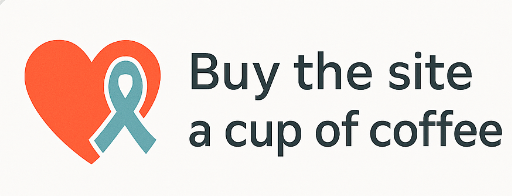Part 1–12+: The Foundations of Cancer Biology, Defense, and Weakness
Cancer doesn’t just appear—it adapts, feeds, defends itself, and survives by hijacking your body’s normal systems.
This series breaks down how cancer operates biologically, why it’s so hard to kill, and how each of those survival tricks can be turned against it. From metabolism and mitochondrial damage to immune suppression and dietary strategy, these articles provide a step-by-step understanding of the enemy—before you build the protocol to fight it.
🧬 Part 1: DNA, Telomeres, and Mitochondria
Learn how cancer begins at the cellular level—where damaged DNA, shortened telomeres, and mitochondrial failure set the stage for uncontrolled growth.
🔗 Read Part 1
🔥 Part 2: How Cancer Feeds and Apoptosis Works
Understand how cancer cells absorb glucose and amino acids—and how we can trigger apoptosis, a natural cell death switch, to destroy them.
🔗 Read Part 2
☢️ Part 3: Glutathione, Immune Activation, and Radiation Timing
Learn how glutathione both helps and hurts. Discover why timing antioxidant and oxidative therapies is key to making treatment work.
🔗 Read Part 3
🔐 Part 4: The 10 Cancer Pathways and How to Block Them
Cancer uses 10 key biological pathways to survive. This page shows how each works—and how to block them using natural strategies.
🔗 Read Part 4
🧪 Part 5: CD38, NAD⁺, and Strengthening Your Immune Army
CD38 is a NAD⁺ killer that weakens your immune system. Learn how to protect immune cells and preserve the fuel they need to attack.
🔗 Read Part 5
🩸 Part 6: Iron, Red Meat, and Starving the Cancer of Fuel
Iron is a double-edged sword—essential to your body, but a weapon for tumors. Learn how to limit it without harming yourself.
🔗 Read Part 6
🥑 Part 7: Fasting, Ketosis, and Weaponizing Your Diet Against Cancer
This is about more than skipping meals. Ketosis turns off cancer’s fuel supply. Fasting supercharges your immune system and weakens tumors.
🔗 Read Part 7
⏳ Part 8: How Long It Takes to Reach Ketosis and Structuring the Anti-Cancer Keto OMAD Diet
Timing matters. This guide explains how to enter ketosis and how to structure One Meal a Day (OMAD) to support autophagy and immune strength.
🔗 Read Part 8
⚙️ Part 9: Protocol Integration
Once you understand how cancer survives, you can design a daily rhythm to attack it. This page ties all the concepts together into one strategy.
🔗 Read Part 9
⚖️ Part 10: Balancing Protein and Iron: Supporting the Body Without Feeding the Cancer
Low doesn’t mean none. Learn how to safely maintain your immune system and blood while still depriving tumors of the fuel they love.
🔗 Read Part 10
🌿 Part 11: Detox After the Battle: How Natural Herbs Help Clean Your Body After Fighting Cancer
Radiation, supplements, and tumor breakdown leave debris. This guide explores how herbs like milk thistle, dandelion, and activated charcoal help clean up.
🔗 Read Part 11
🚧 Part 12: Hurdles and Hidden Dangers: The Gut Cost of Pelvic-Area Cancer Treatment
Radiation and aggressive therapy can devastate the gut. Learn what to watch for—and how to protect your digestion and microbiome during recovery.
🔗 Read Part 12
🔬 Bonus Topic: The Double-Edged Sword of Digestive Cancers
Cancers in the colon and rectum are exposed to everything you eat. That gives you a rare chance to attack the tumor directly—if you know how.
🔗 Read Bonus Topic
🧠 Bonus Topic 2: Why Cancer in the Lymph Nodes Is Hard to Kill Until the Main Tumor Dies
Your main tumor isn’t just growing—it’s protecting every node around it. Kill the leader, and the rest begin to fall.
🔗 Read Bonus Topic
🧭 Healing Hunger: What It Really Means When You’re Craving Fuel After Cancer Kill Phases
After you attack the tumor, the hunger that follows isn’t weakness—it’s a sign your body is rebuilding. Learn how to feed it without feeding cancer.
🔗Read: Why Healing Hunger Is a Signal of Recovery
What Is Thymidine Phosphorylase—and Why It Matters in Cancer?
Thymidine phosphorylase is an enzyme that helps tumors grow new blood vessels and activate certain chemotherapy drugs like Capecitabine. In cancer, it plays a double role—fueling tumor growth while also making treatments more effective when timed correctly.
🔗Read the workings of Thymidine Phosphorylase
How Cancer Hijacks NAD+
NAD+ is a vital molecule that powers energy and repair in all cells—but cancer can hijack it to survive and resist treatment.
🔗 Read more about how NAD+ affects cancer and how to target it.
Cancer Cachexia: How to Stop Muscle Loss and Rebuild Strength
Cancer cachexia is when your body breaks down its own muscle for fuel—but it’s not just weight loss, it’s a metabolic attack. Learn how to block the pathways behind muscle wasting and recover strength with targeted supplements and healing meals.
🔗 Read Cancer Cachexia Muscle Loss Recovery:
Starve Cancer by Cutting Sugar
Learn how cancer uses sugar as fuel—and how fasting, keto, and targeted supplements can block glycolysis to help weaken tumors naturally.
👉 Read: Glycolysis and Cancer: Why Cutting Off Sugar Can Starve the Tumor
Stop Cancer from Spreading
🧬 Learn how cancer invades nearby tissues and spreads to other parts of the body—and how you can block metastasis with natural compounds and targeted timing.
👉 Stop Cancer from Spreading
🧬 MCT Oil: The Trojan Horse That Starves Cancer from the Inside
Read This Page to Learn How It Delivers Fat-Soluble Killers Like Artemisinin and Fenbendazole Directly to the Tumor

$1 or $2 can help us grow
💬 Share This Page
Want to help others learn about this? Click to share:
👉 Share on Facebook
👉 Share on Twitter
👉 Share on Reddit
👉 Share via Email